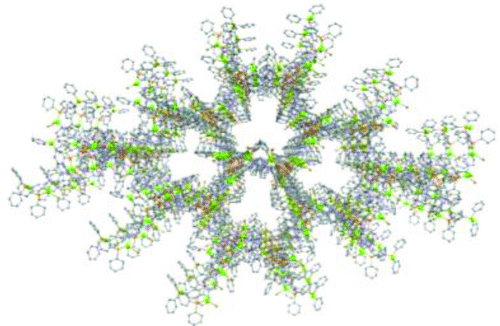The chemistry of metal?organic frameworks (MOFs) has been developing rapidly in last two decades, while phosphine-based networks are less studied. Phosphines are a type of ligands in which electronic and steric properties can be tuned over a wide range. Phosphine based ligands are extremely attractive not only in coordination chemistry but also in homogeneous catalysis.
 |
Researchers at the State Key Laboratory for Oxo Synthesis and Selective Oxidation, Lanzhou Institute of Chemical Physics (LICP), Chinese Academy of Sciences (CAS), have successfully synthesized three isostructural 3D phosphine-based MOFs with Br? , Cl?, or PF6? as counteranions on the basis of Cu2L2 dimeric subunits. These complexes have 3-connected networks with an unprecedented chiral 4.122 topology and can be further simplified as a 64.82-qtz net arising from the rigid Cu2L2 tetrahedral node. The complexes possess 1D chiral channels to show anion-tunable flexible sorption properties. Preliminary study indicates that the materials have size-selectivity for ketalization reaction. Future work will focus on synthesis of enantiopure 3D phosphine materials with larger porosity, on the basis of tailored achiral subunits and chiral reticular synthesis, which may find potential application in asymmetric catalysis and separation.
The work has received support from the Natural Science Foundation of China, the Fundamental Research Funds for the Central Universities, the Specialized Research Fund for the Doctoral Program of Higher Education of China, and the SRF for ROCS of SEM. The findings have been published in Chem. Mater.(Chem. Mater.2012, 24, 480?485).


